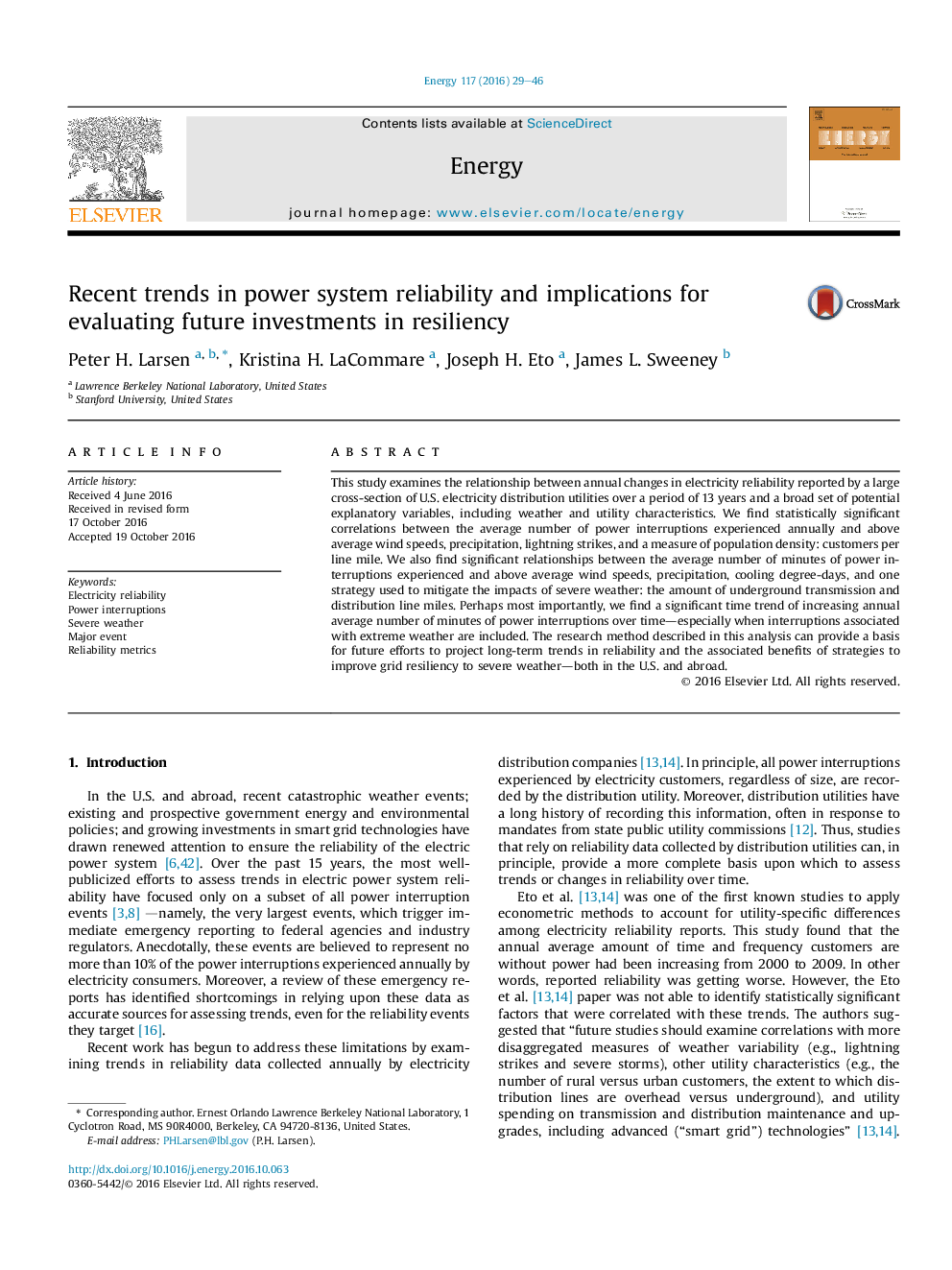| Article ID | Journal | Published Year | Pages | File Type |
|---|---|---|---|---|
| 5477208 | Energy | 2016 | 18 Pages |
Abstract
This study examines the relationship between annual changes in electricity reliability reported by a large cross-section of U.S. electricity distribution utilities over a period of 13 years and a broad set of potential explanatory variables, including weather and utility characteristics. We find statistically significant correlations between the average number of power interruptions experienced annually and above average wind speeds, precipitation, lightning strikes, and a measure of population density: customers per line mile. We also find significant relationships between the average number of minutes of power interruptions experienced and above average wind speeds, precipitation, cooling degree-days, and one strategy used to mitigate the impacts of severe weather: the amount of underground transmission and distribution line miles. Perhaps most importantly, we find a significant time trend of increasing annual average number of minutes of power interruptions over time-especially when interruptions associated with extreme weather are included. The research method described in this analysis can provide a basis for future efforts to project long-term trends in reliability and the associated benefits of strategies to improve grid resiliency to severe weather-both in the U.S. and abroad.
Related Topics
Physical Sciences and Engineering
Energy
Energy (General)
Authors
Peter H. Larsen, Kristina H. LaCommare, Joseph H. Eto, James L. Sweeney,
